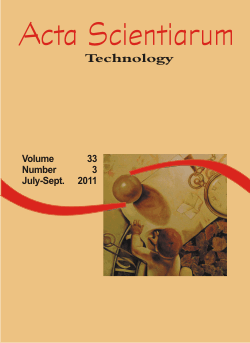<b>Removal of Fe (II) in fixed bed of NaY Zeolite</b> - doi: 10.4025/actascitechnol.v33i3.8408
DOI:
https://doi.org/10.4025/actascitechnol.v33i3.8408Keywords:
ion exchange, equilibrium data, mathematical modelAbstract
This work investigated the removal of iron ions in fixed bed columns by NaY zeolite at 30°C and pH= 4.5. The experimental breakthrough curves were obtained for feed concentrations from 0.2 to 2.94 meq L-1 and a flow rate of 8 mL min. -1. Through the breakthrough curves it was possible to evaluate isotherm behavior and o obtain the maximum removal capacity of 2.61 meq g-1. Langmuir and Freundlich isotherm models were used to represent the column equilibrium data. A phenomenological model was used to represent the breakthrough curves. The mathematical model was obtained by means of mass-balance equations applied to an element of the column in the liquid phase and solid phase. The overall mass-transfer coefficient was estimated using the experimental data of the breakthrough curves. The mathematical model properly represented the ion exchange of iron ions in fixed bed column.Downloads
Download data is not yet available.
Downloads
Published
2011-03-17
How to Cite
Ostroski, I. C., Dantas, J. H., Canavesi, R. L. S., Silva, E. A. da, Arroyo, P. A., & Barros, M. A. S. D. de. (2011). <b>Removal of Fe (II) in fixed bed of NaY Zeolite</b> - doi: 10.4025/actascitechnol.v33i3.8408. Acta Scientiarum. Technology, 33(3), 305–312. https://doi.org/10.4025/actascitechnol.v33i3.8408
Issue
Section
Chemical Engineering
License
DECLARATION OF ORIGINALITY AND COPYRIGHTS
I Declare that current article is original and has not been submitted for publication, in part or in whole, to any other national or international journal.
The copyrights belong exclusively to the authors. Published content is licensed under Creative Commons Attribution 4.0 (CC BY 4.0) guidelines, which allows sharing (copy and distribution of the material in any medium or format) and adaptation (remix, transform, and build upon the material) for any purpose, even commercially, under the terms of attribution.
Read this link for further information on how to use CC BY 4.0 properly.











8.png)




